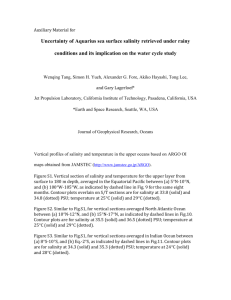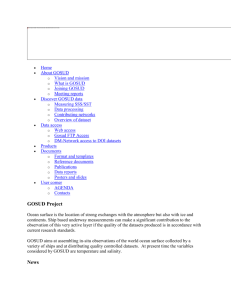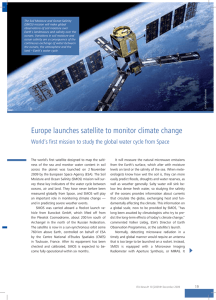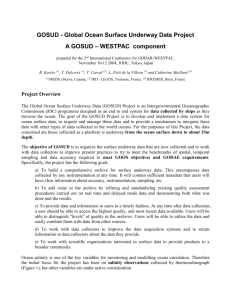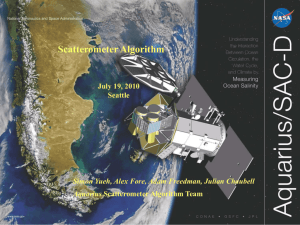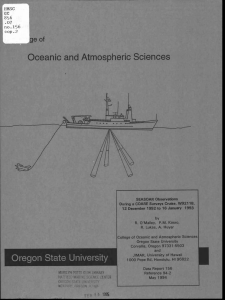Abstract: Surface Validation for Salinity Satellite Missions
advertisement
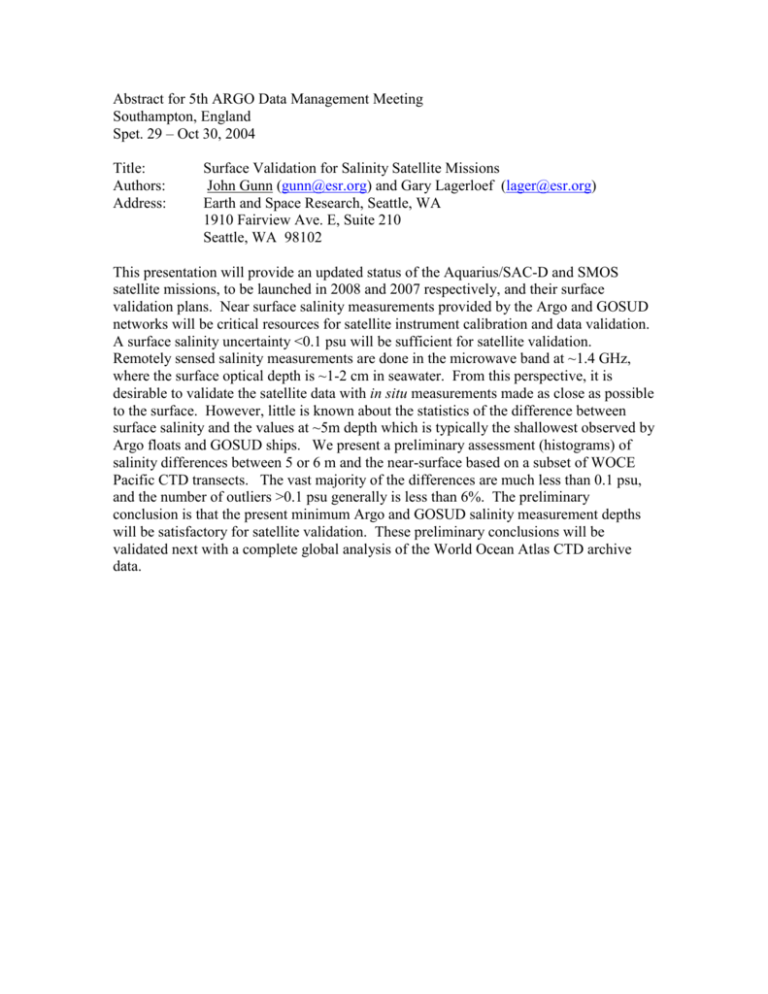
Abstract for 5th ARGO Data Management Meeting Southampton, England Spet. 29 – Oct 30, 2004 Title: Authors: Address: Surface Validation for Salinity Satellite Missions John Gunn (gunn@esr.org) and Gary Lagerloef (lager@esr.org) Earth and Space Research, Seattle, WA 1910 Fairview Ave. E, Suite 210 Seattle, WA 98102 This presentation will provide an updated status of the Aquarius/SAC-D and SMOS satellite missions, to be launched in 2008 and 2007 respectively, and their surface validation plans. Near surface salinity measurements provided by the Argo and GOSUD networks will be critical resources for satellite instrument calibration and data validation. A surface salinity uncertainty <0.1 psu will be sufficient for satellite validation. Remotely sensed salinity measurements are done in the microwave band at ~1.4 GHz, where the surface optical depth is ~1-2 cm in seawater. From this perspective, it is desirable to validate the satellite data with in situ measurements made as close as possible to the surface. However, little is known about the statistics of the difference between surface salinity and the values at ~5m depth which is typically the shallowest observed by Argo floats and GOSUD ships. We present a preliminary assessment (histograms) of salinity differences between 5 or 6 m and the near-surface based on a subset of WOCE Pacific CTD transects. The vast majority of the differences are much less than 0.1 psu, and the number of outliers >0.1 psu generally is less than 6%. The preliminary conclusion is that the present minimum Argo and GOSUD salinity measurement depths will be satisfactory for satellite validation. These preliminary conclusions will be validated next with a complete global analysis of the World Ocean Atlas CTD archive data.


